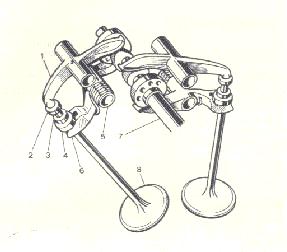Let me try this again. I just typed up a new thread and the TC software killed it. Grrrr.
This time I'll copy it to the clip board before posting. Double Grrrr.
OK, new cam. Yesterday I called Comp and ordered a new solid roller and needed parts. We all know what those are. The cam was spec'ed, based on my engine/drive train/weight combo, of course. Great, right?
I told them I'd call back if the dynamic compression was too high. Then after firing up Pat Kelly's software and entering the new cam spec's and my combo, the program said the DCR is 9.3:1! Yikes. I called right back and ordered the next cam on the list of Comps software. It has to be ground next week. Then I entered the much longer duration cam into Kelly's program. Still 9.3:1. WTF? And no mater how many times the spec's were changed, even though the IVC showed the new value, the results were 9.3. Horrible and engine deadly of course. Then I blew away the program and restarted. Now the DCR came in at 8.41:1. Whew. I guess you get what you pay for. New cam:
New cam:
292 298 I E advertised
254 260 I E @.050
.666 I&E
The push rods will be ordered after checking length. The 'unneeded' block wear plate is coming from Summit along with the 'unneeded' checking springs. Also this second cam has nearly half the clearance required than the first one. Kinda good with solids.
This is sooooo much fun.
This time I'll copy it to the clip board before posting. Double Grrrr.
OK, new cam. Yesterday I called Comp and ordered a new solid roller and needed parts. We all know what those are. The cam was spec'ed, based on my engine/drive train/weight combo, of course. Great, right?
I told them I'd call back if the dynamic compression was too high. Then after firing up Pat Kelly's software and entering the new cam spec's and my combo, the program said the DCR is 9.3:1! Yikes. I called right back and ordered the next cam on the list of Comps software. It has to be ground next week. Then I entered the much longer duration cam into Kelly's program. Still 9.3:1. WTF? And no mater how many times the spec's were changed, even though the IVC showed the new value, the results were 9.3. Horrible and engine deadly of course. Then I blew away the program and restarted. Now the DCR came in at 8.41:1. Whew. I guess you get what you pay for.
292 298 I E advertised
254 260 I E @.050
.666 I&E
The push rods will be ordered after checking length. The 'unneeded' block wear plate is coming from Summit along with the 'unneeded' checking springs. Also this second cam has nearly half the clearance required than the first one. Kinda good with solids.
This is sooooo much fun.







